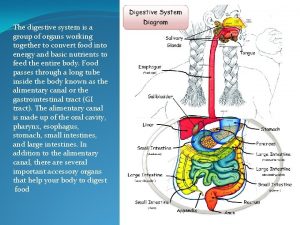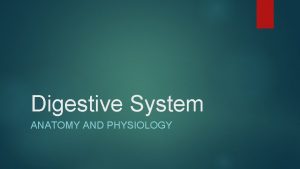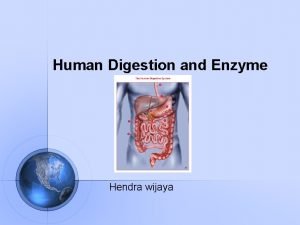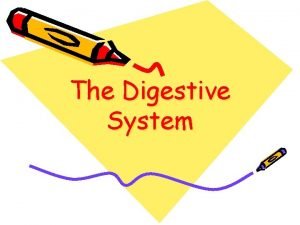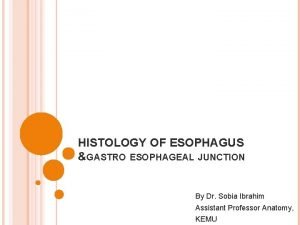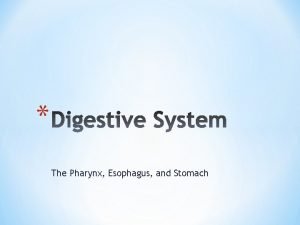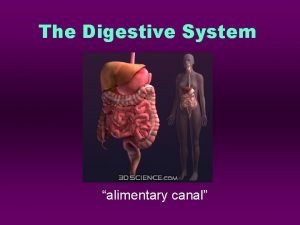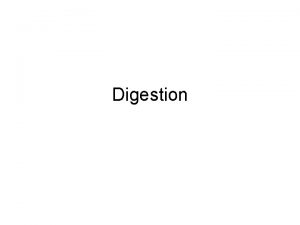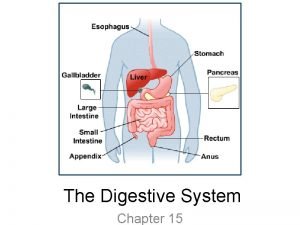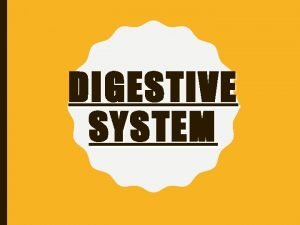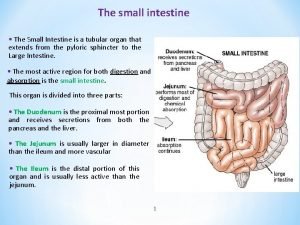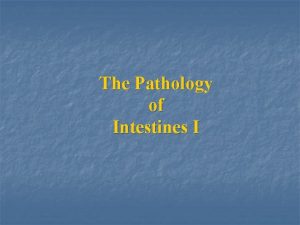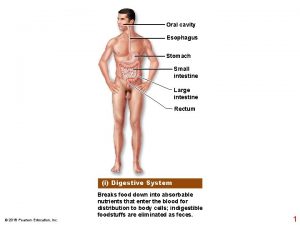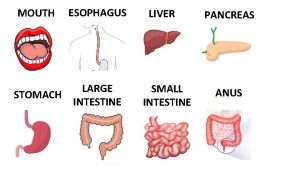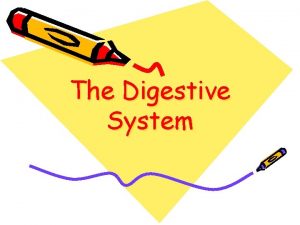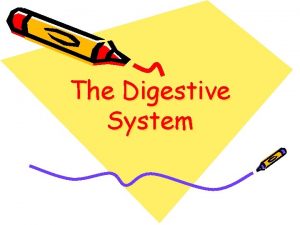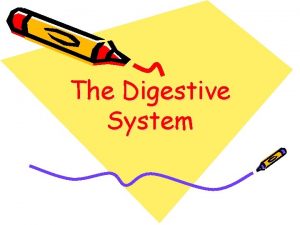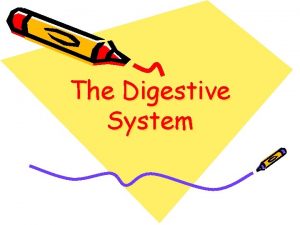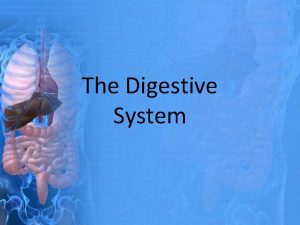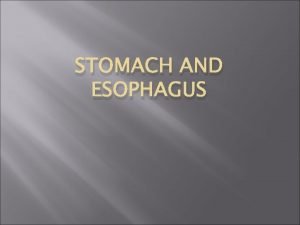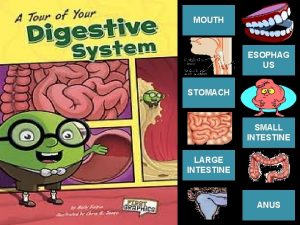The Digestive System Structures Esophagus Stomach Small Intestine













- Slides: 13

The Digestive System

Structures • • Esophagus Stomach Small Intestine Large Intestine(colon or bowel) – Rectum – Anus • Liver • Pancreas • Gall Bladder

Function • To break down food into smaller portions that can be absorbed into the bloodstream and delivered to the cells of the body. • This process is called DIGESTION.

2 types of digestion: chemical and mechanical – Mechanical digestion mashes and grinds food into smaller pieces. • Stomach, teeth, tongue use mechanical digestion – Chemical digestion is the breaking down of food into molecules • Stomach, small intestine, and saliva use chemical digestion.

More on digestion • Begins in the mouth • Most occurs in the small intestine

The digestive tract Ø Food passes through the digestive tract Ø Includes the mouth, esophagus, stomach, small intestine, large intestine

Esophagus • Muscular tube that connects the pharynx (throat) to the stomach

Stomach • Muscular, sac like organ • Uses chemical and mechanical digestion to break down food • Contains acid and enzymes to break down food and kill bacteria you may swallow

Small Intestine • Smaller in diameter; longer in length • Most digestion occurs here • Lined with villi that increase surface area for nutrient absorption • Nutrients are absorbed in the bloodstream here

Large Intestine • Stores, compacts, and eliminates waste products • Fiber helps to keep the stool(poop) soft and moving through • Last part is the rectum – Stores feces(poop) until it can be eliminated from the body – Opening is called the anus

Liver • Not part of the DIGESTIVE TRACT aids in digestion • Makes bile • Stores and absorbs nutrients • Breaks down toxins

Gall Bladder • Not part of the DIGESTIVE TRACT aids in digestion • Stores bile that is made in the liver

Pancreas • Not part of the DIGESTIVE TRACT aids in digestion • Neutralizes stomach acids – The body’s natural antacid (like Tums) • Produces enzymes that aid in digestion • Also part of the endocrine system
 Esophagus stomach small intestine large intestine
Esophagus stomach small intestine large intestine Small intestine function in digestive system
Small intestine function in digestive system Examples of enzymes
Examples of enzymes Digestive system for labelling
Digestive system for labelling Esophagus stomach junction histology
Esophagus stomach junction histology Anatomy of the throat and esophagus
Anatomy of the throat and esophagus Movement in alimentary canal is called
Movement in alimentary canal is called Large intestine function in digestive system
Large intestine function in digestive system Anatomy of small and large intestine
Anatomy of small and large intestine Large intestine function in digestive system
Large intestine function in digestive system What is the j shaped muscular bag
What is the j shaped muscular bag Pancreas location quadrant
Pancreas location quadrant Small intestine gangrene
Small intestine gangrene Suspensory ligament of treitz
Suspensory ligament of treitz
